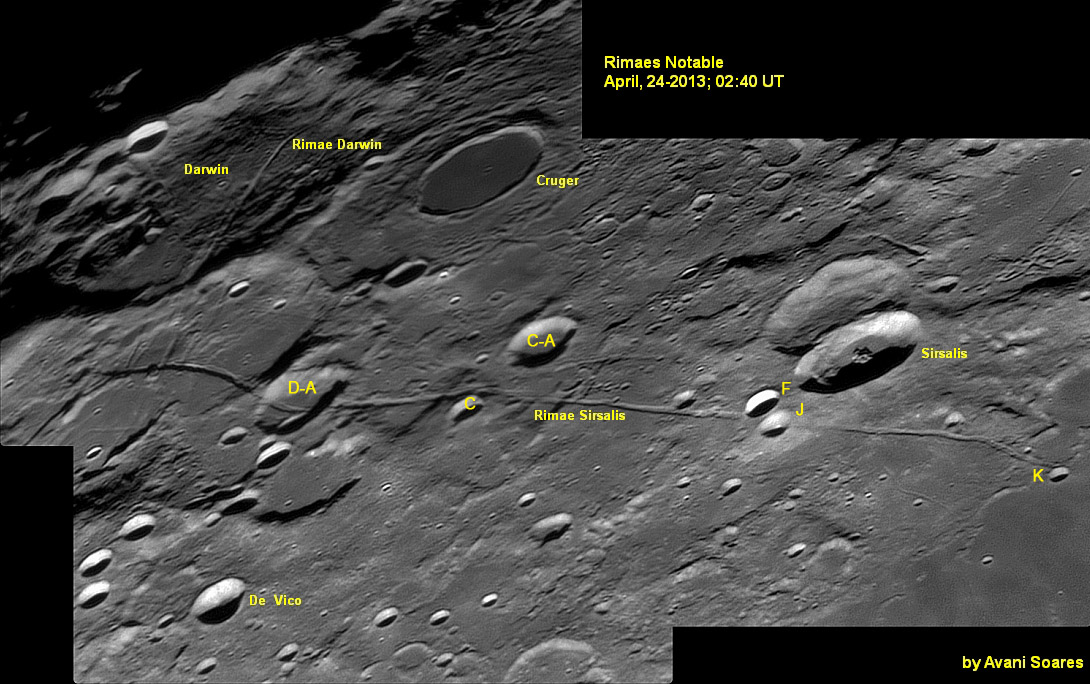July 8, 2013
Unstoppable

image by Avani Soares, Canoas, Brazil
Sirsalis is commonly considered the longest straight rille on the Moon. But in looking closely at Avani's image and the LRO Quickmap, complexities emerge.
The rille is relatively straight from south of Sirsalis K to Crüger C, but both ends curve away. This straight part is about 180 km long and about 3 km wide.
Near Crüger C an older rille coming past Crüger CA joins the main rille and once inside Darwin A (D-A) abruptly begins to bend toward the west, and continues
in a large arc inside an unnamed probable old crater between Darwin and A. The Sirsalis RIlle over-rides old rilles coming from Darwin and finally near its
southern end is cut/resurrected by a rille trending nearly at right angles to it. As in many places on the Moon where rilles cross, the geologic stresses
responsible for the changes are unknown. At the north end of the Sirsalis straight segment the rille bends a little towards the east and then is covered by
mare lavas at Sirsalis K. I just discovered though that a short segment of that rille cuts the southern wall of Sirsalis E and then is lost for good under the
mare. The Sirsalis Rille is associated with a magnetic anomaly that has been interpreted as due to a vertical sheet of magma (a dike) that may have fed the
Oceanus Procellarum lavas. The short rille bit at Sirsalis E demonstrates that the rille extended further than previously known, and indeed, the magnetic
anomaly reaches to E.
Chuck Wood
Technical Details
GSO 12 "Qhy 5L and Powermate 4X. Processing AS!2 and Photofiltre; 3 image mosaic.
Related Links
21st Century Atlas chart 26.
Yesterday's LPOD: Chapelet Luna
Tomorrow's LPOD: Awesome in Blue
COMMENTS?
Register, Log in, and join in the comments.



